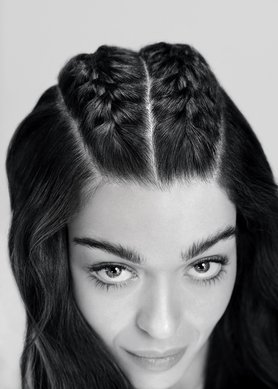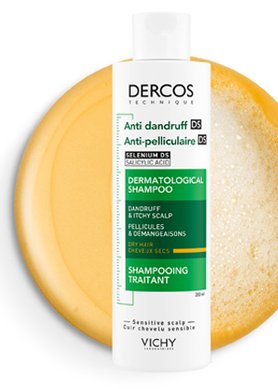What dandruff is...
Before we dive into the causes of dandruff, let's clarify what dandruff is and isn't...
Dandruff is characterised by the shedding of dead skin cells from the scalp, leading to visible white or yellowish flakes in the hair and on your shoulders. You may also become extra sensitive to hair care products, have a scalp that feels tight with itching sensations, and in some cases experience patches of redness.
Dandruff Symptoms
-
Flakes: Noticeable flakes (can be white or yellow, oily or dry), in hair, on scalp, and shoulders.
-
Itchy sensation: An uncomfortable, persistent itchy feeling on the scalp.
-
Scalp Appearance: Visible redness accompanied by rough scalp texture. Dry or oily scalp.
And what it isn't...
Although it's such a common condition, and has been extensively studied, public misconceptions still abound around dandruff. It isn't simply a dry scalp, nor the result of poor hygiene or infrequent hair washing. And it is NOT contagious.
Types of Dandruff
There are different types of dandruff. Dry dandruff is the most common form, appearing as visible fine, loose, white flakes that shed from the scalp.
Oily dandruff tends to feature oily skin and produce yellowish flakes which are adherent to the scalp. It's associated with excess production of sebum (our natural skin oils).
Both dry and oily dandruff share low scalp hydration levels and an altered skin barrier function.
So, what is dandruff caused by?
At its core, dandruff is caused by three main factors: an unbalanced scalp microbiome, dysregulated sebum production, and altered skin moisture barrier function. If not managed, any of the three can aggravate the others and precipitate a self-perpetuating cycle.
Unbalanced scalp microbiome
The microbiome is the invisible ecosystem of microorganisms that colonises our body. Although the range of microbes that makes up the skin microbiome varies across different areas of the body, having it in balance is integral to skin wellbeing and plays a key role in skin protection. If the natural balance of the scalp microbiome is upset, it can lead to excessive skin cell proliferation and flaking.
Unbalanced sebum composition
Sebum is produced by sebaceous glands in the skin. It's made up of various oils, some of which are important nutrients for the microbiome. Excess oil production on the scalp can lead to an imbalance of the microbiome. This can potentially cause discomfort on the scalp, and trigger dandruff.
Altered skin moisture barrier function
An altered skin moisture barrier function is caused by both microbiome imbalance and dysregulation of sebum production, resulting in rough skin and flakes on the scalp.
Impact of External Factors:
If you're wondering why you get dandruff all of a sudden, it might have been triggered by any one of a number of external factors, including;
-
Environmental (pollution, UVA/UVB and infrared light, changing of the seasons)
-
Lifestyle (nutrition, tobacco usage, stress, lack of sleep)
Impact on Quality of Life
Dandruff is a very visible condition. Sufferers are often self-conscious, and dandruff can have a significant negative impact on their quality of life. It may lead to low self-esteem.








